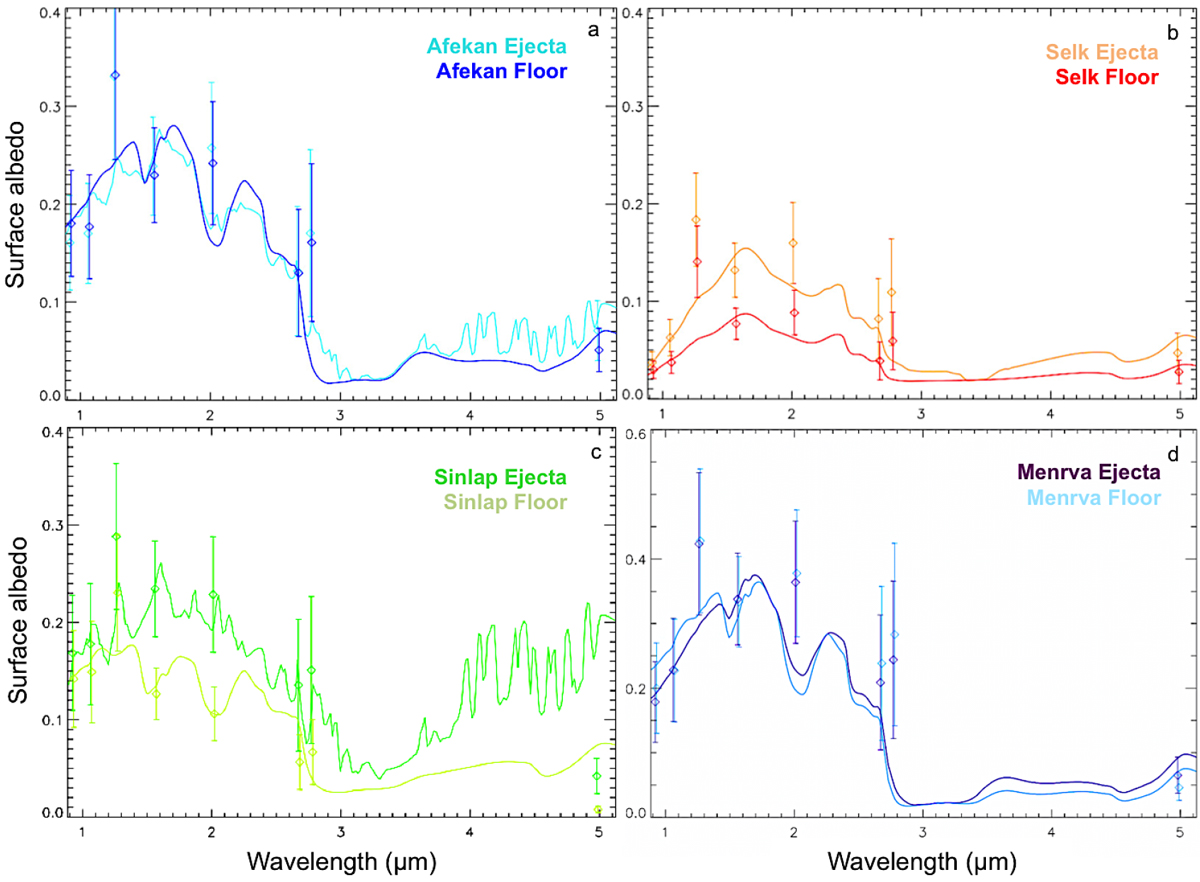Fig. 7

Inferred compositional constraints for four different craters (as an example) and their subunits. The diamond symbols correspond to the extracted surface albedos as shown in Fig. 6, and the full lines to the compositional simulations, which are produced by the code using the best fit attained between the laboratory spectra and the albedos. Panel a shows the surface albedo results of one typical plains crater (Afekan -in turquoise for the ejecta blanket and blue for the crater floor); panel b shows the results for one typical dunes crater (Selk -in orange for the ejecta blanket and red for the crater floor); panels c and d show the results from the two special cases (Sinlap – in green for the ejecta blanket and light green for the crater floor, and Menrva – in magenta for the ejecta blanket and light blue for the crater floor). From (a) and (b) we infer that Afekan is enriched in water ice and Selk has an organic-rich nature with no obvious water ice. Panels c and d (we note the change in scale) present two craters that differ from the rest on Titan. Both Sinlap and Menrva have strong signatures of water ice in their mixtures. The 3σ error bars are inferred by the code during the extraction of the surface albedos. The χ2 values for all eight areas range from 0.15 to 1.68, which means that there is a high correlation between the albedo data and the composition simulations.
Current usage metrics show cumulative count of Article Views (full-text article views including HTML views, PDF and ePub downloads, according to the available data) and Abstracts Views on Vision4Press platform.
Data correspond to usage on the plateform after 2015. The current usage metrics is available 48-96 hours after online publication and is updated daily on week days.
Initial download of the metrics may take a while.


